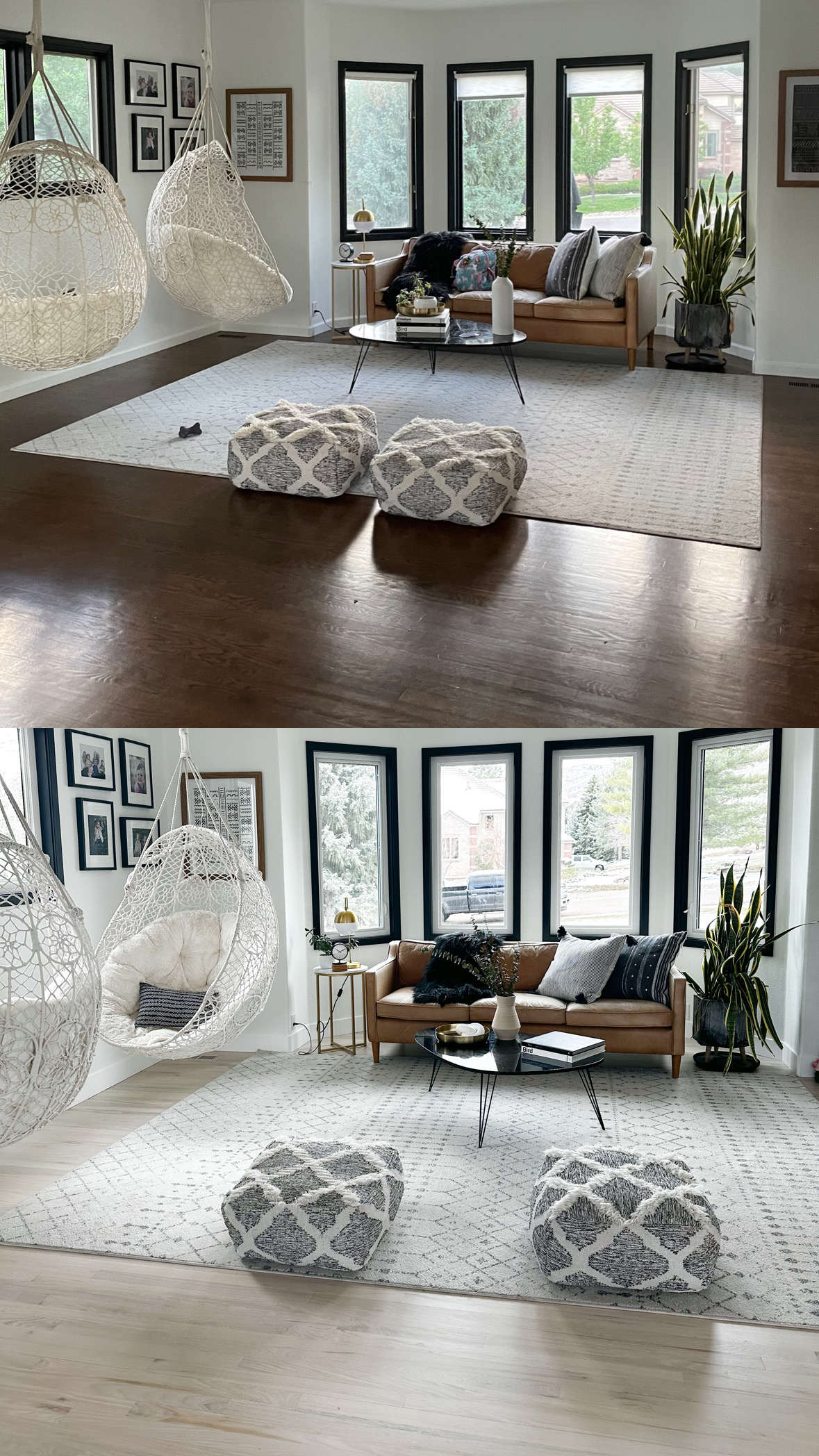It has been almost a year since we whitewashed our original 1990’s red oak floors. I learned so much during the process. There are definitely a few things we would do differently and I have a TON of tips to give. So read through and hopefully this helps you on your journey of refinishing your floors so hopefully you don’t have the same problems that we now do in the end.
I took these quickly before we started moving furniture out. This is the first that you want to ask about; does the flooring company move the furniture or do you? Ours did but we got the smaller things out ourselves to save time the day before they started. You’ll want to make sure your garage (or another outside area) is ready for everything and make sure you lay down tarps. Our flooring crew had tarps to lay down for the furniture to keep it clean which was nice. Also something worth asking about.
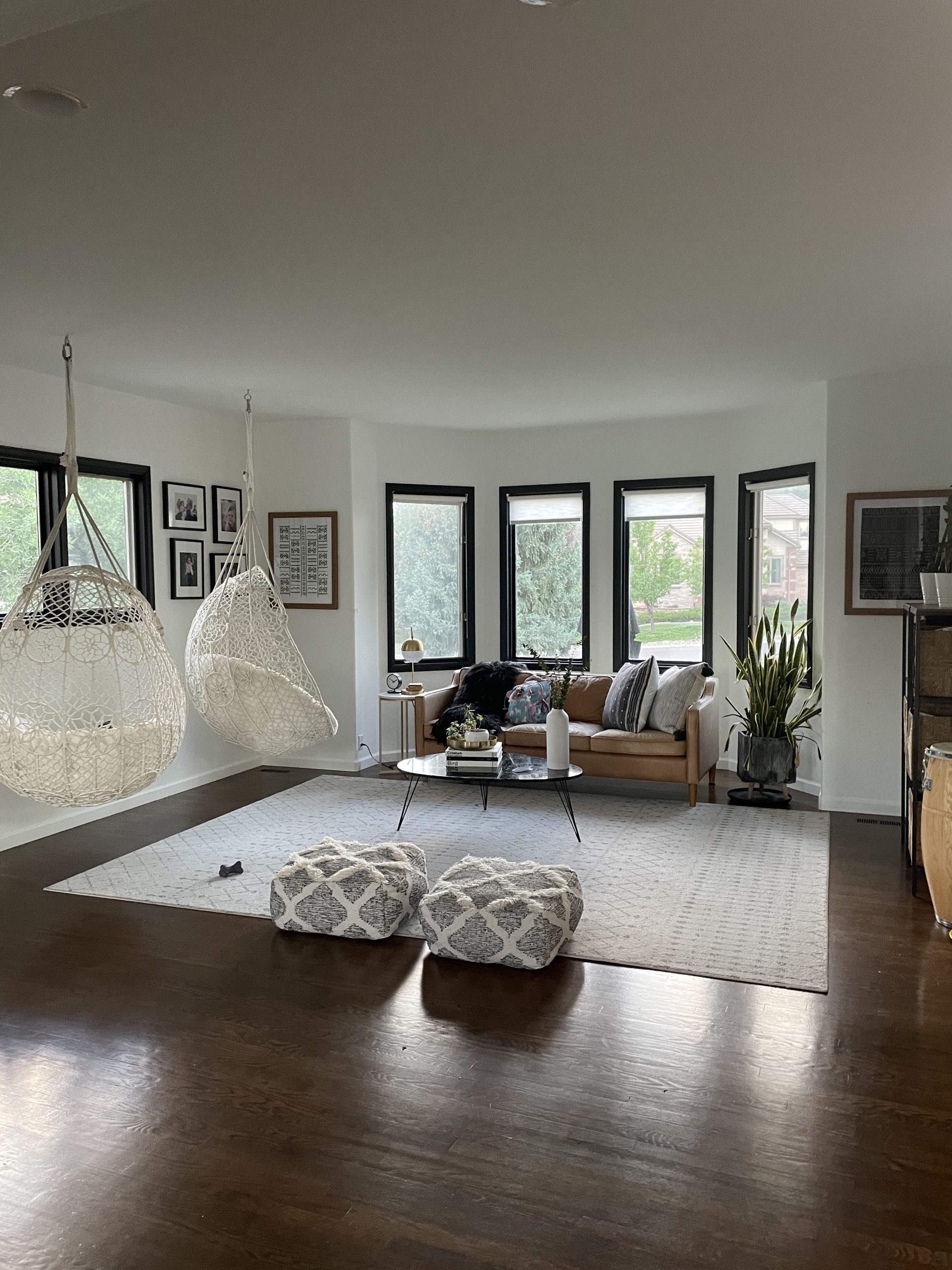
I thought a lot about replacing flooring vs staining. Since they do replace some boards boards and fill in gaps where needed (more on that later), we didn’t think the expense of replacing would be worth the outcome. And although there are a lot of things that I wish had gone differently in the process, I do think that staining was the right call for this house. I don’t think anyone would immediately look at the flooring and think ‘oh these are original,’ I think the overall look of the house now feels fresh and modern and bright. Sure, in a perfect world the wider planks would give an elevated feel, but I just wanted that heaviness of the dark stain to go away. We were also renovating most of the house during this process so budget-wise, this just made the most sense.
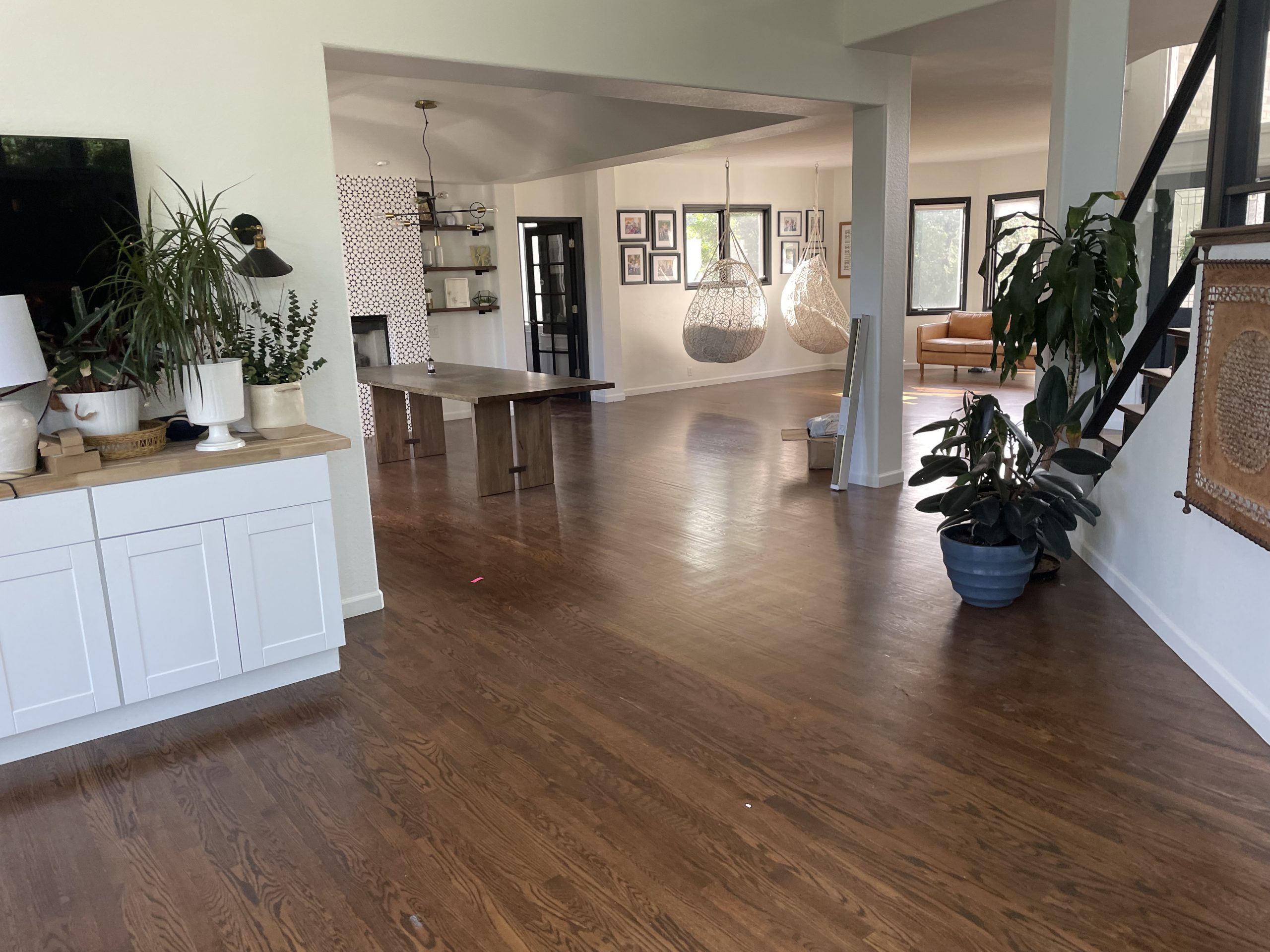
While they are using this very loud machine to strip off the top layer of stain, you’ll want to not be in the house. They covered most everything in plastic but they can’t cover everything so windows, tops of doors, and things like that all needed to be dusted. I wouldn’t do this in the winter since all doors and windows were open the whole time to help with the smells and dust.
Our flooring area was fairly large, but they were finished with this after a long day. They ran the machine a few times and even used a hand tool that went around areas like the kitchen island and the toilets etc where the machine wouldn’t reach. You want to make sure whoever you use does this because it wasn’t done prior and you could see the height variation around our toilet, banisters, and in the kitchen where the machine couldn’t reach. This was something they did mention when I was first meeting with them and those issues we once had were resolved. It takes longer and is a pain, so not everyone does this. Make sure to ask! If you zoom in you can see on the photo below that around the floor outlets they didn’t do a second pass, that’s where they would sand by hand.
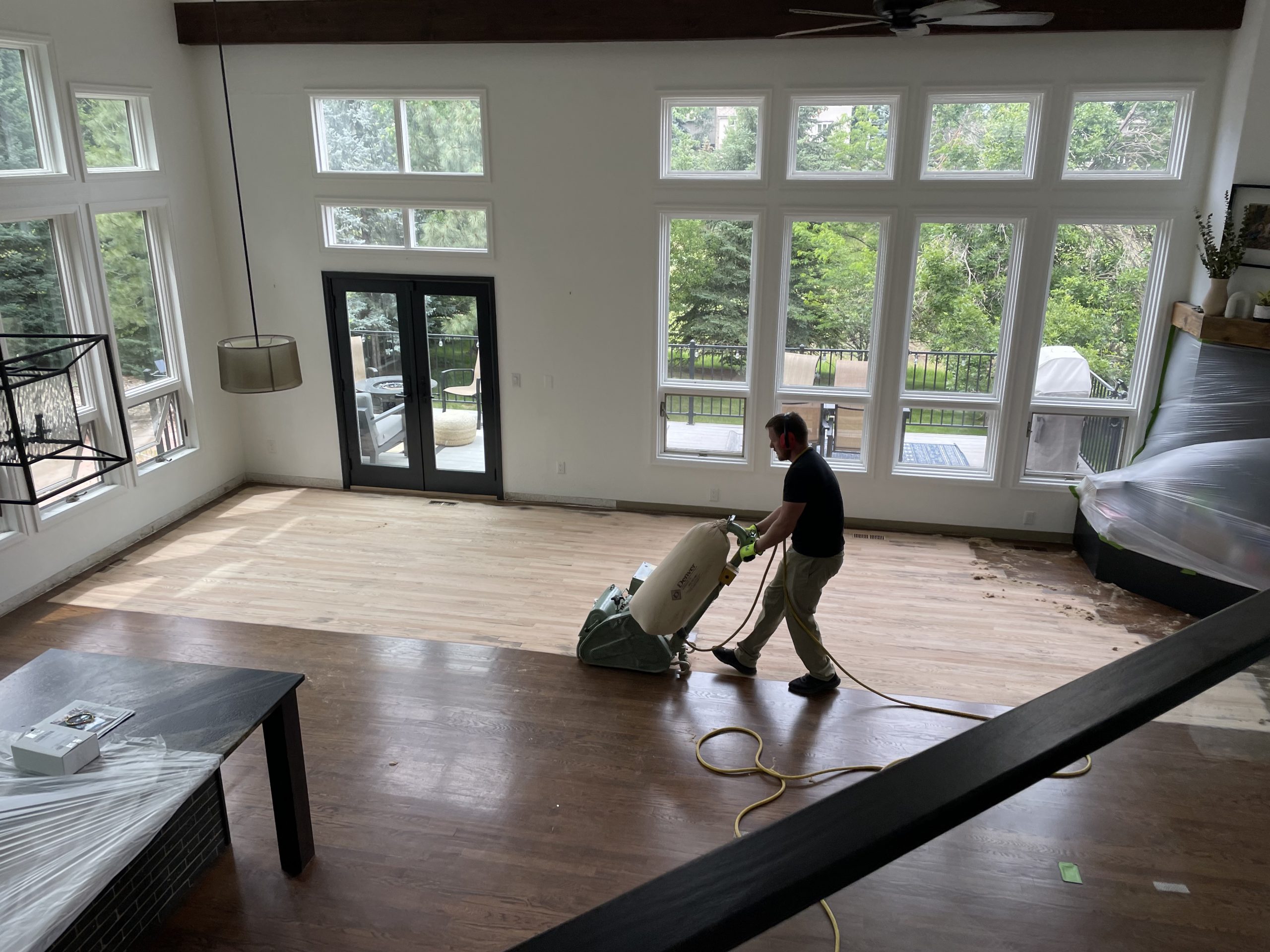
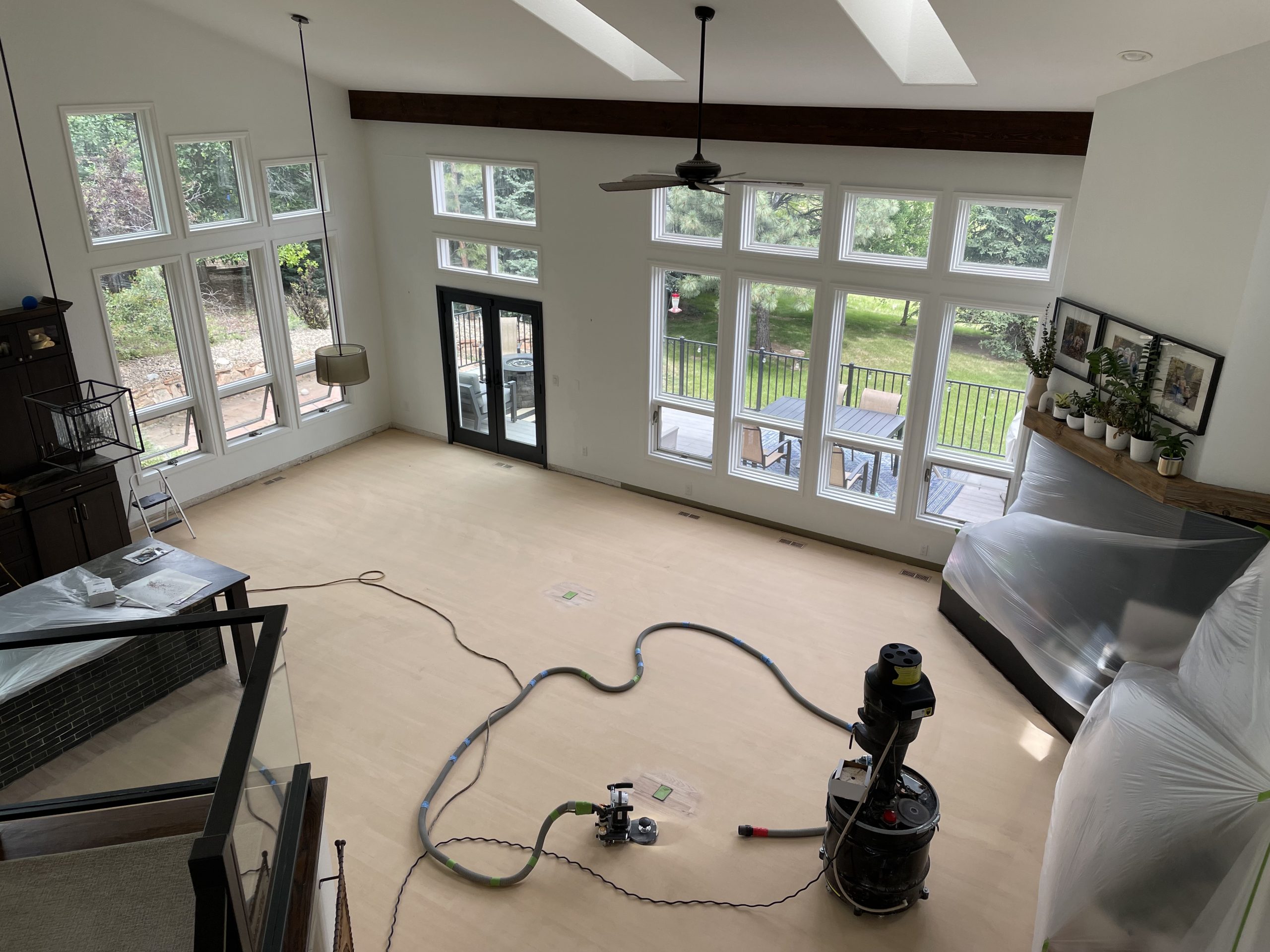
They should use the machine a few times to really get the finish off. This was after one pass which was already looking so much better.
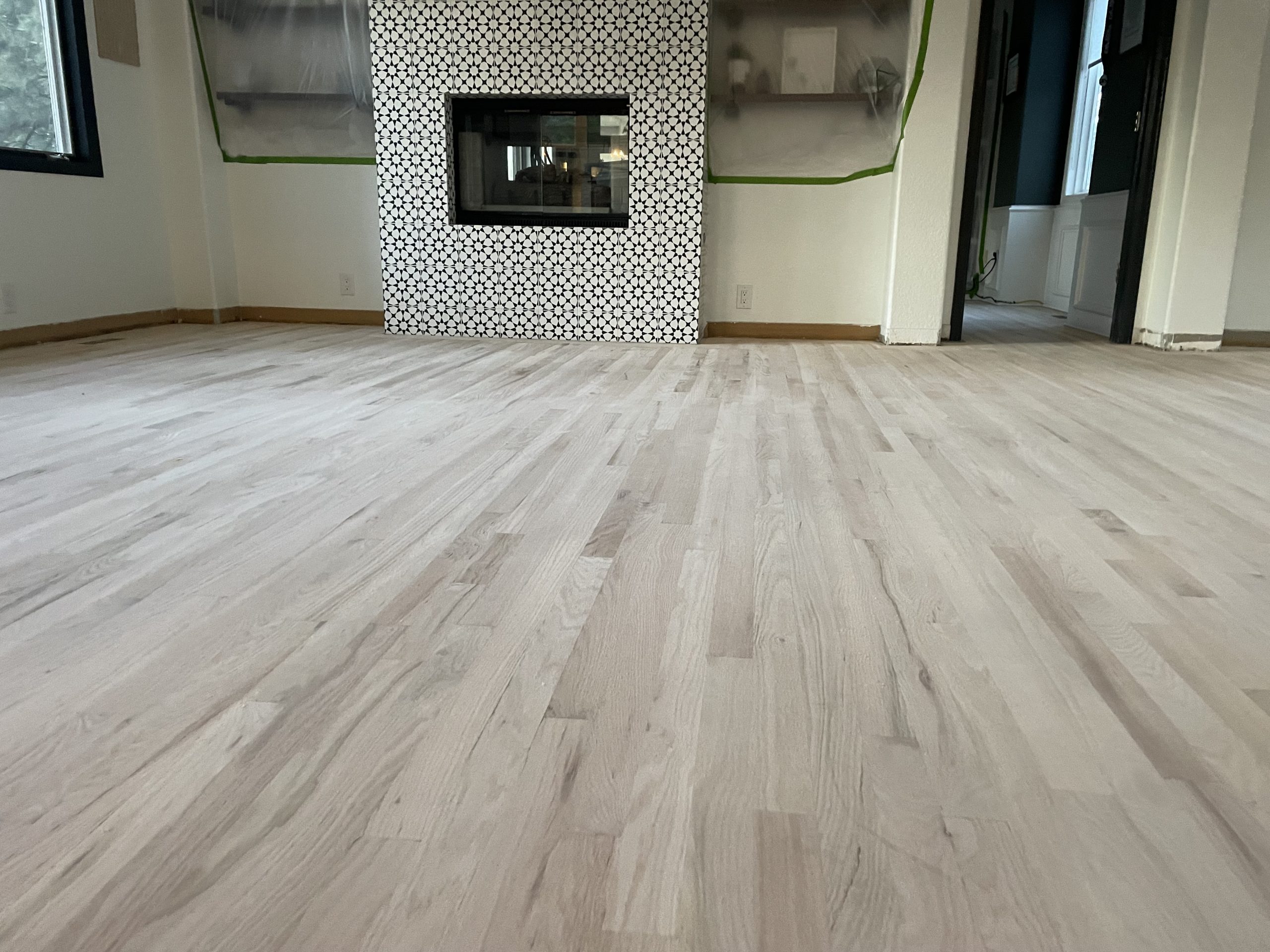
The area on the right is after one pass, then the left side is after 2 passes where you can no longer see the woodgrain. This will ensure all of the peel scratches and uneven texture is completely smooth before staining. It’s at this point that you should walk the floor completely, make sure everything is smooth especially around the walls, toilets especially since they said that’s the hardest areas to smoothes, and stairs etc.. This is your last chance.
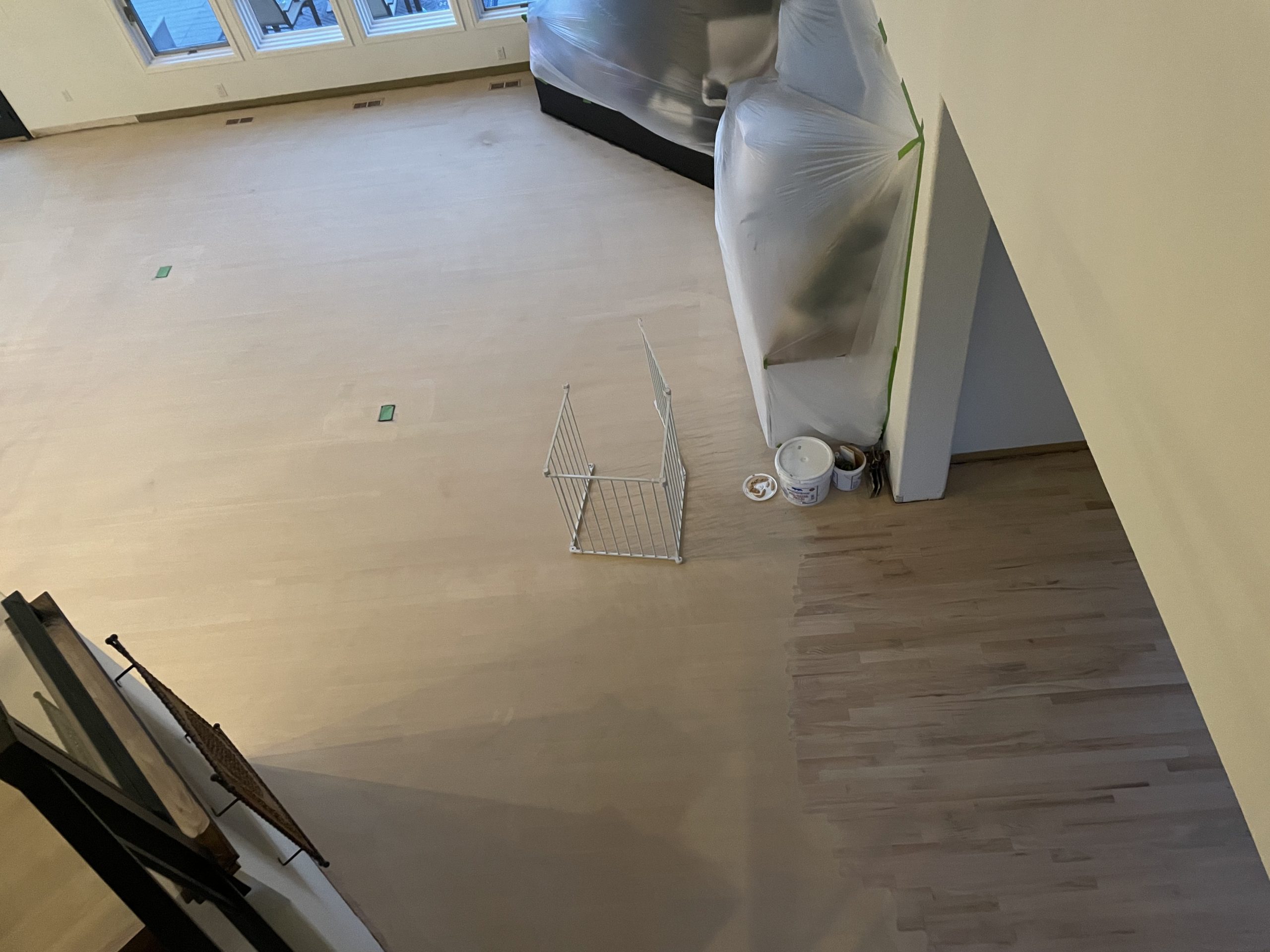
It’s after this that boards will be replaced and they’ll use some sort of spackle to fill in gaps. This initially looked really good and everything was finally even, but almost a year in whatever they used has come up especially on our white oak (more on that below) and it feels like it needs to be completely redone.
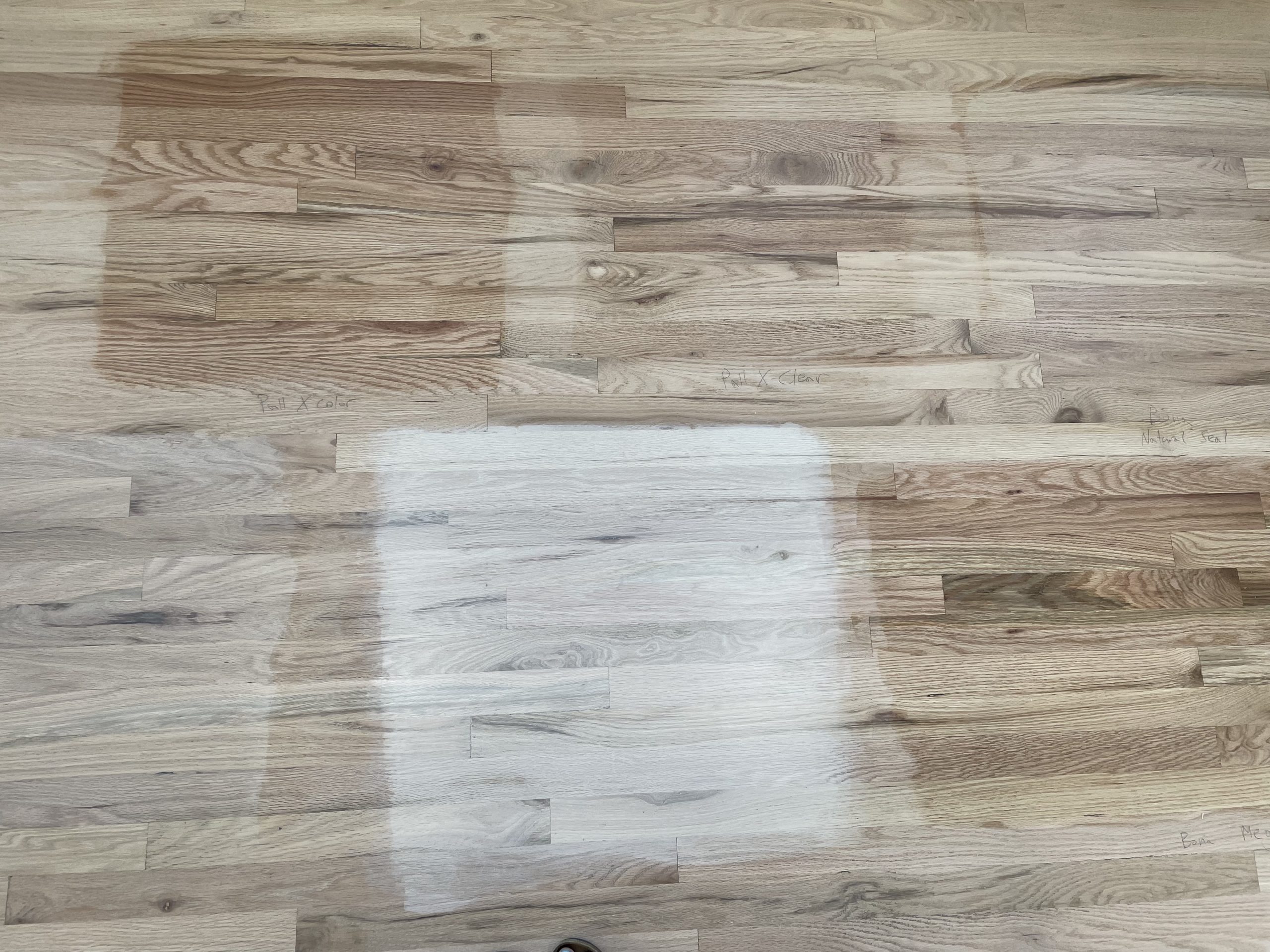
Here’s where things took a turn. They said they were going to lay down samples of stains to choose from and then put down only 3. They didn’t ask about a stain choice ahead of time like a painter does, so I assumed that they would have a lot of options on hand and the selection would be easy since I knew what I wanted. I asked why there were only 3 choices and he said these were the main stains that they typically use. I’m talking about the top 3 squares above the white patch, you can see the names of each in pencil at the bottom. He tried to talk me into them but I told him I wanted a whitewash. He told me they had never done a whitewash before. Had I known this I would’ve gone in a different direction. But now here we were.
I spent some time online and found out that what people were using to whitewash red oak flooring was a White Oak stain, Bona’s NordicSeal over that, and a matte finish. They told me that a matte finish was not a good idea and the floors would show dirt and not wear as well. I love the finish. I would’ve been really unhappy with shiny floors which aren’t as modern, the whole look was exactly what I wanted.
Since they hadn’t used this before they had to go to their supplier and get the stain, then brush on 2 coats since it was 2 different products that created the look. They were unhappy because this slowed things down, but I had no idea that such a common look for floors wouldn’t be something they used and had on hand.
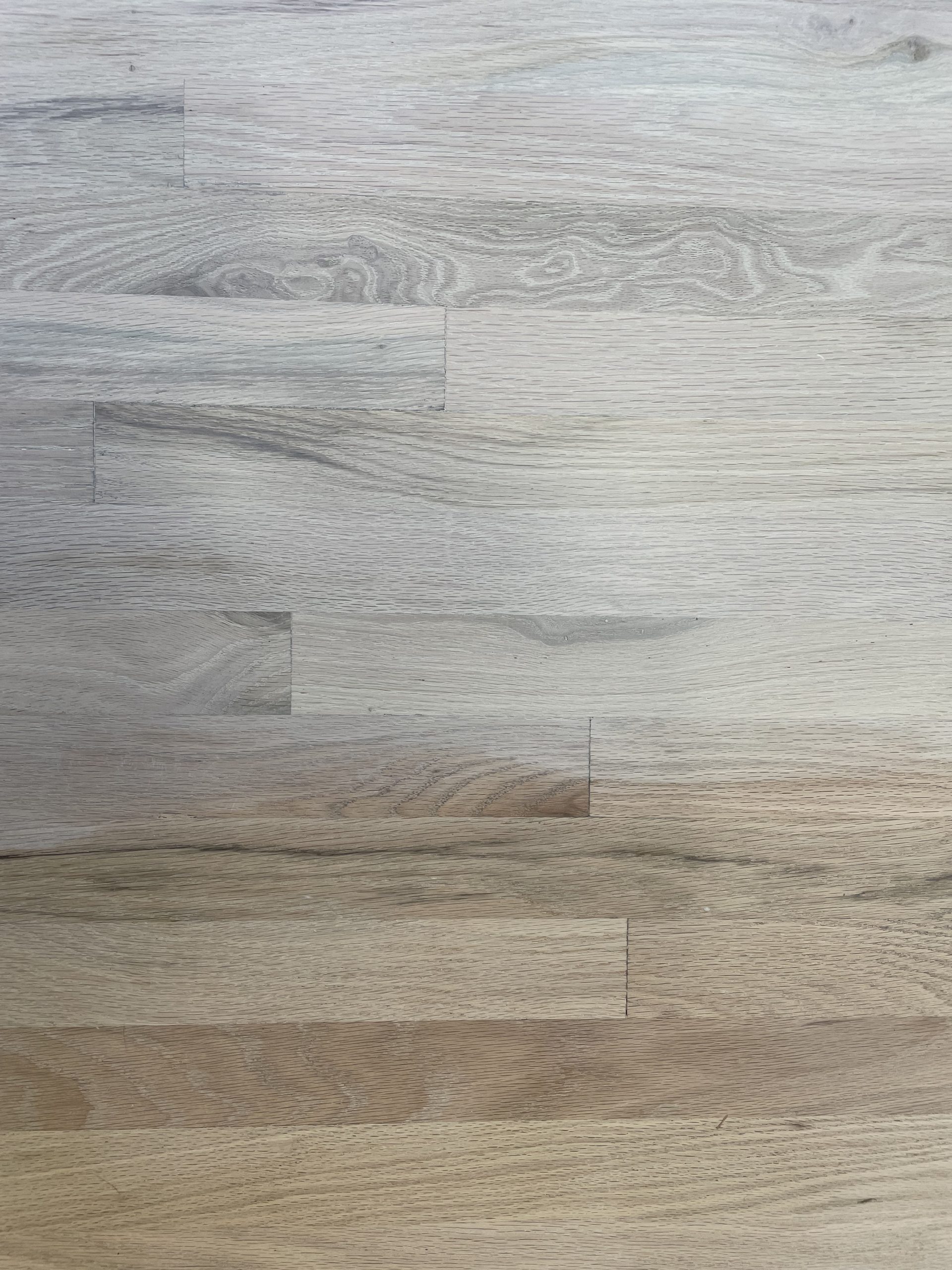
As you can see in the first picture with the samples, the whitewash looks really white. I was a little panicked because it looked almost like paint and I for sure didn’t want that.
But then I zoomed in on the whitewash sample along with the flooring right under it I and that is what it looked like above. Bingo- I had a winner. I would recommend not looking at the samples as a whole on the floor, but zooming in on each one and then comparing them to a photo on your phone of a floor you like. This zooming in helped me to see that whitewash in a new way where it didn’t look so shocking next to the others or our stripped floor.
I mentioned to them that I read online that it was very important to let each coat dry overnight before adding another. The stains they typically used didn’t have the same dry time so now we needed 3 days instead of 2. He told me that he didn’t have the time for the whitewash because he was going out of town and didn’t have the extra day. Then he said least and spoke with his supplier who said it was going to be ok to use the whitewash products in the timeline we had to work with. I asked if we could just wait until he got back but he said then he had several jobs back to back when he was home, so it would be a month before he could come back but assured me it was fine.
While they were staining over the next few days, we stayed in our camper in the driveway. I wouldn’t recommend being in the house while they are staining because the smell is very strong. Even when we would pop in to grab something it was hard to be in the house. You might want to allow an extra day just to air it all out once it dries.
Something also to keep in mind when whitewashing a red oak floor is that there is going to be a tinge of pink. That’s just the nature of it. Even though the wood is stripped down, a slight pink hue will still come through. I’ve read this over and over and it’s good just to have that expectation. This is the finished flooring
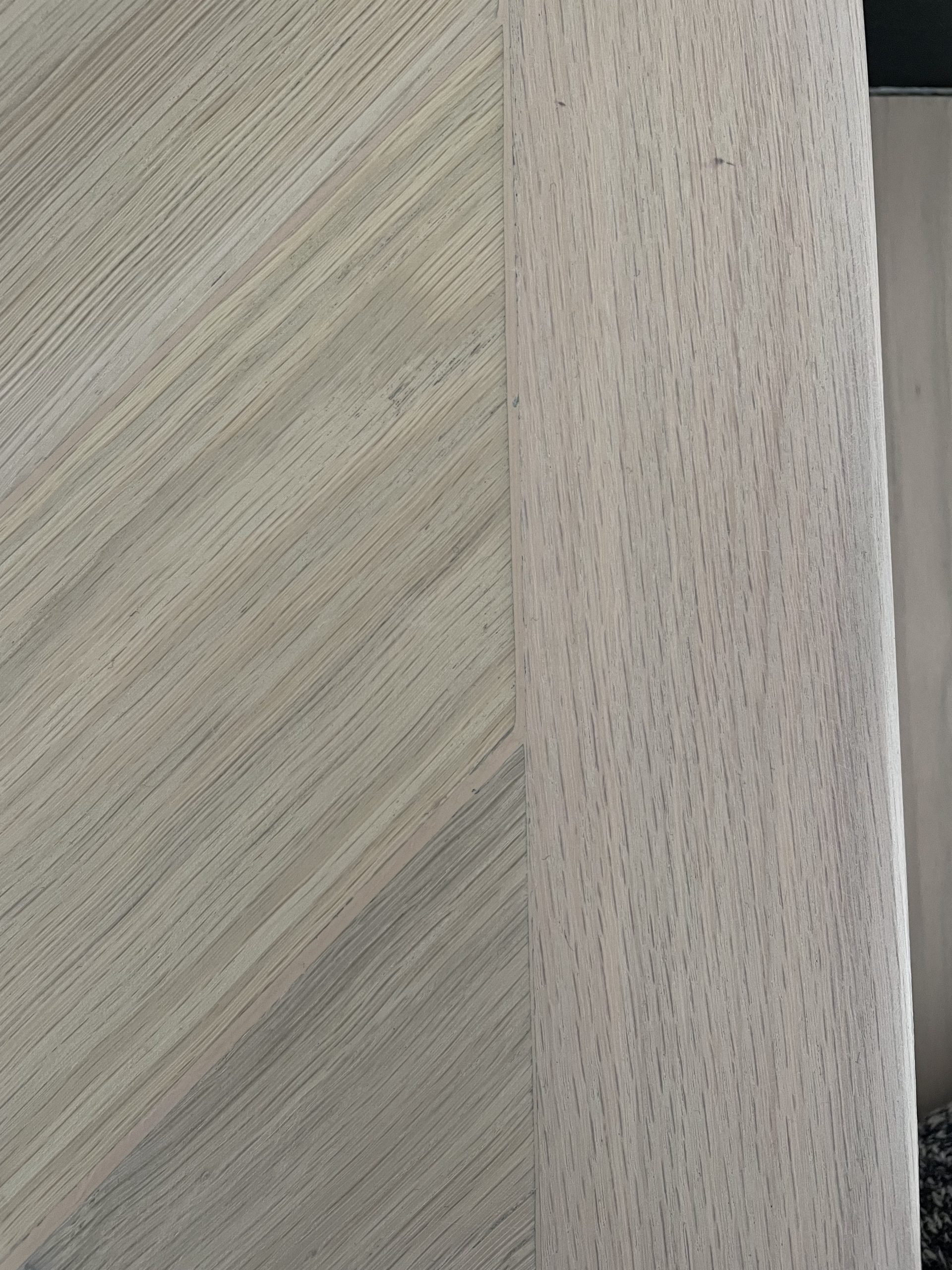
If you look closely, the diagonal grain on the left is white oak which was in the hallway of our top level which we also refinished. That was easy to stain and didn’t have a red hue to it. The vertical grain pattern on the right is the top of the stairs which were also red oak and had a tinge to pink after staining. Slight difference, but worth noting.
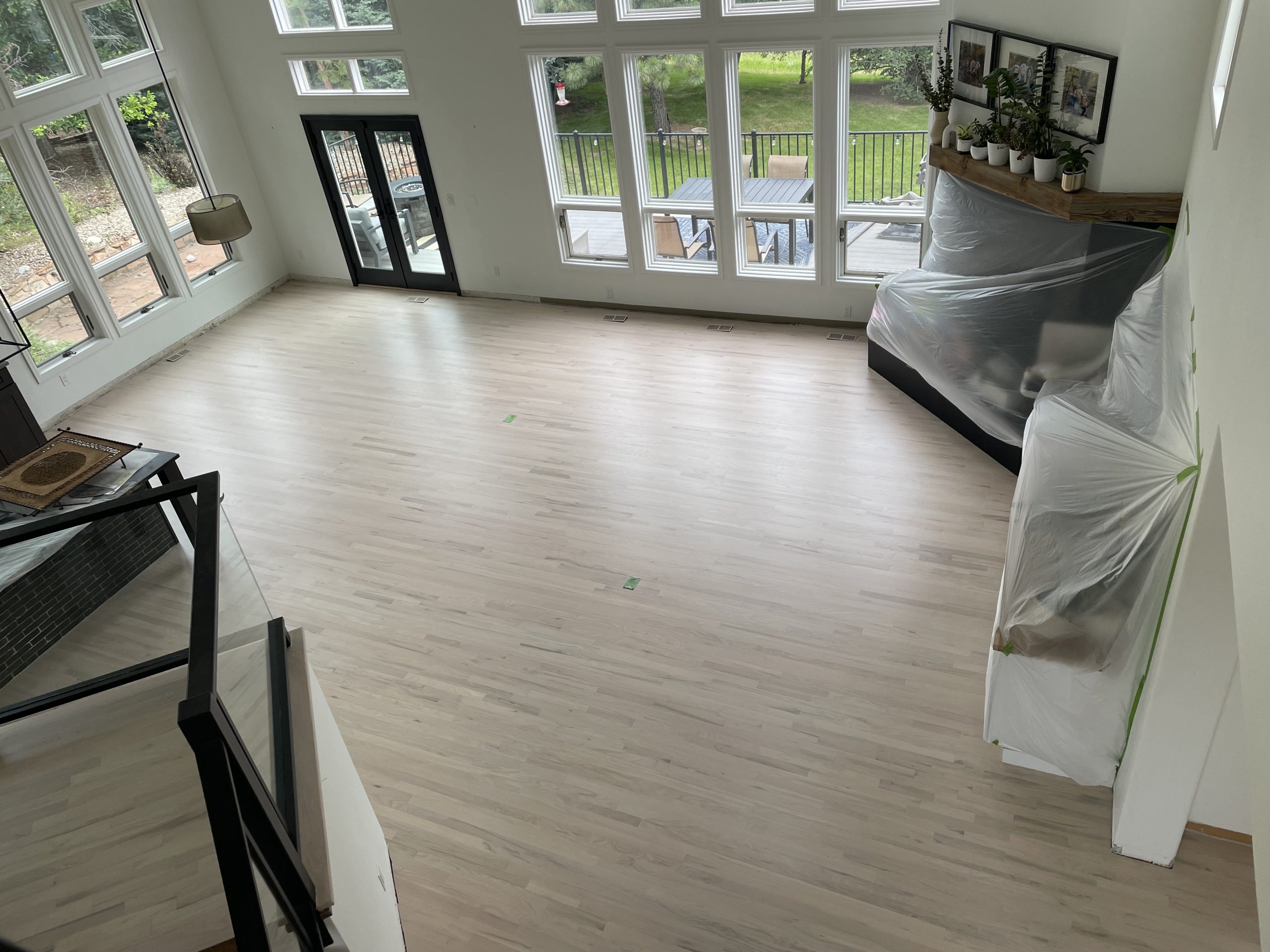
This is what they look like finished. You can see a tinge of pink especially when they’re totally exposed like this, but I’m really happy with the overall look which is so much better than before and added such brightness to the house.
Another thing I didn’t know is how messy the staining process is for other parts of the house. This is where our kitchen cabinets meet the floors and you can see the stain came up against the cabinets. Luckily we were planning to paint the cabinets anyway because we would’ve had to find a stain that matched our cabinets to touch them all up everywhere they met the floor. It was also all over the bottom of the doors that we painted black a week prior to this. I asked about it and they said they aren’t able to tape it off because the stain just splashes under the tape. Who knows if that’s true or not, but they didn’t protect anything and we had no idea this would happen so make sure you’re aware and that you might need to paint right after.

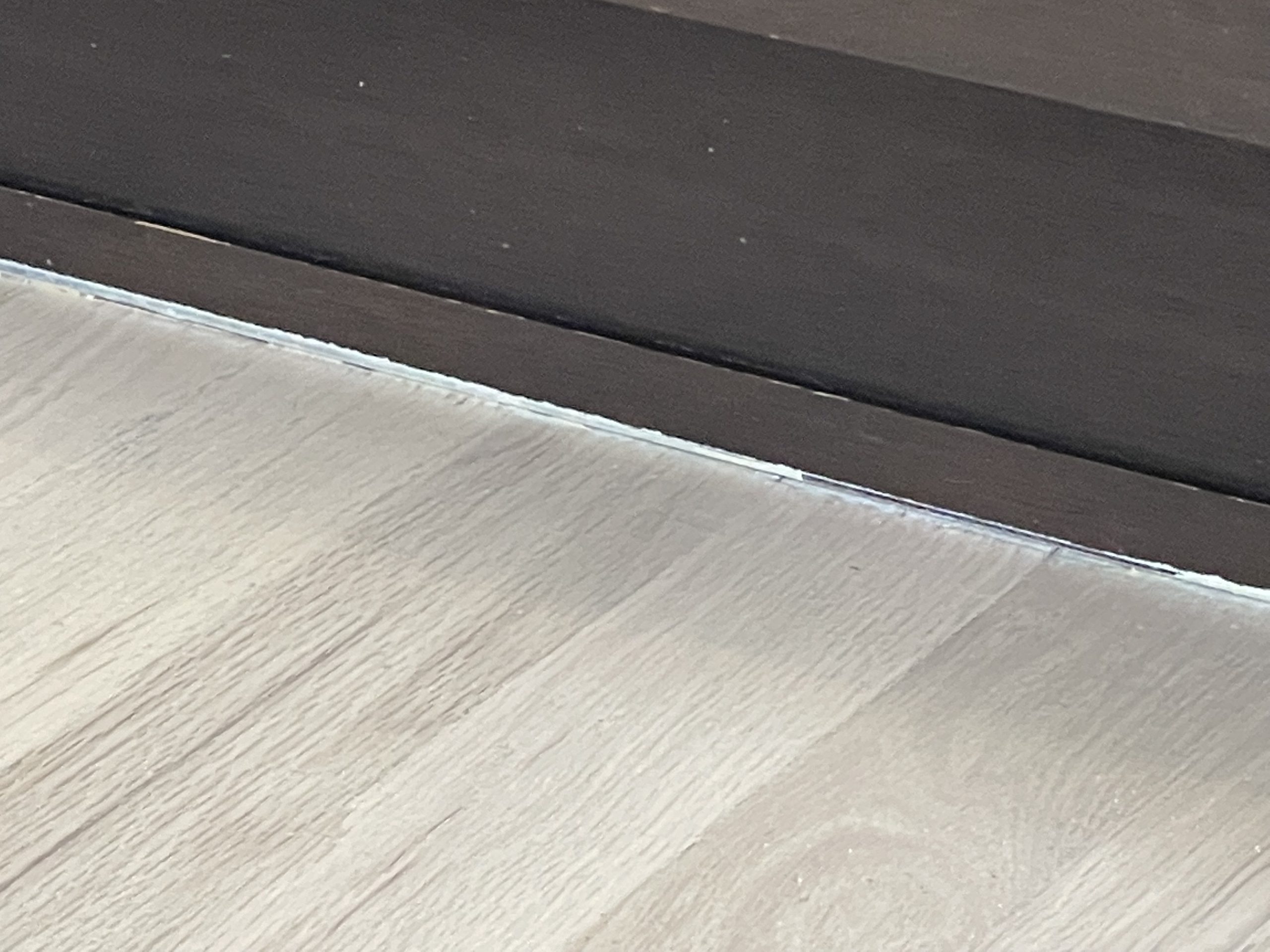
Here is something else they didn’t talk to us about and I had no idea. The stairs. They refinish the treads which is the part you step on, but not the risers which is the back of the stairs. Also everything on the sides will need to be painted. All of the black was just painted a few weeks prior as well and was completely trashed. We did tell them about this and I did put tape around it and they said it wouldn’t be a problem and they would be extra careful but that didn’t happen. We had to repaint it all.
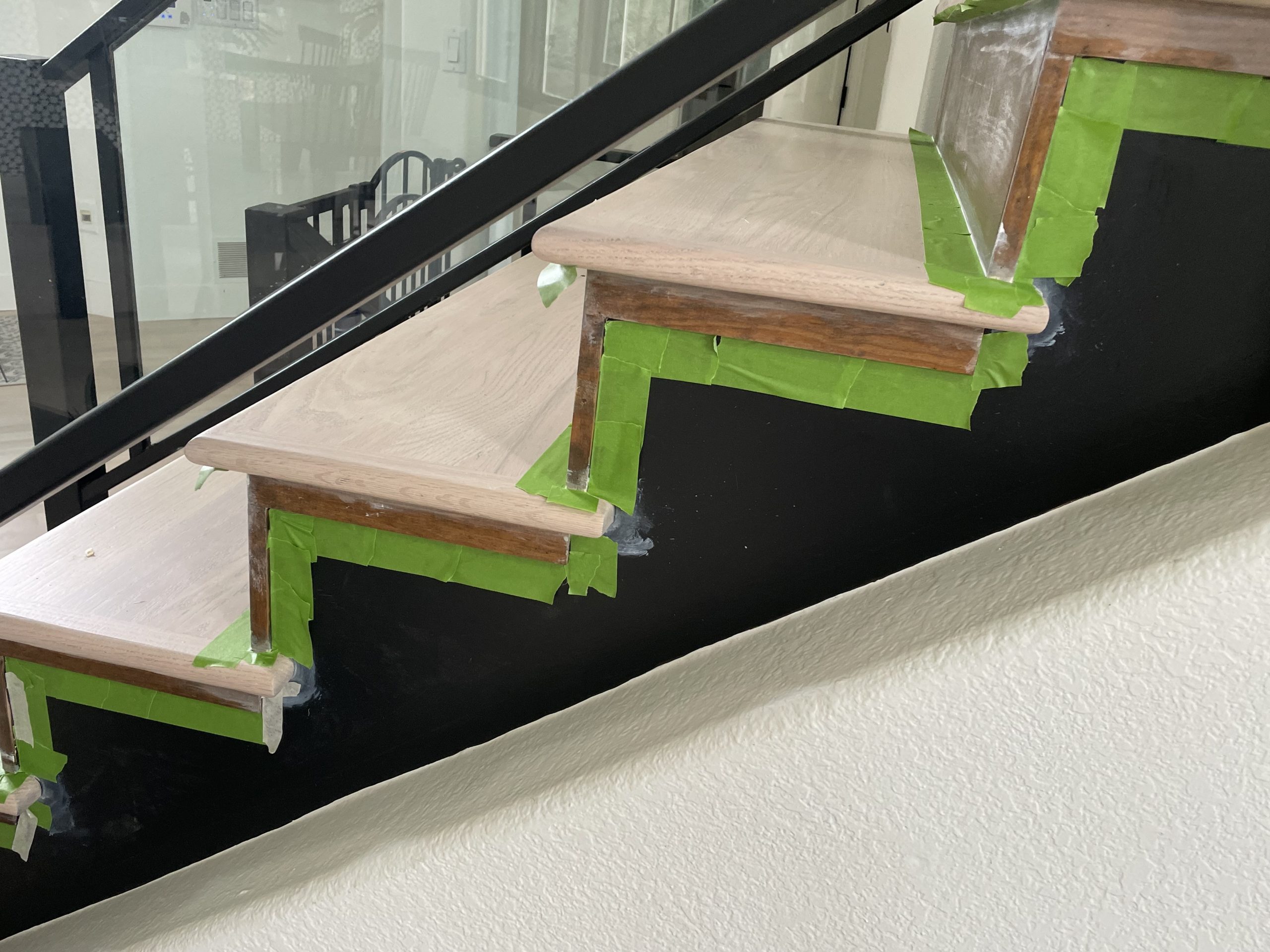
So this is what our stairs looked like right after. Stain all over the risers and now wondering what to do next.
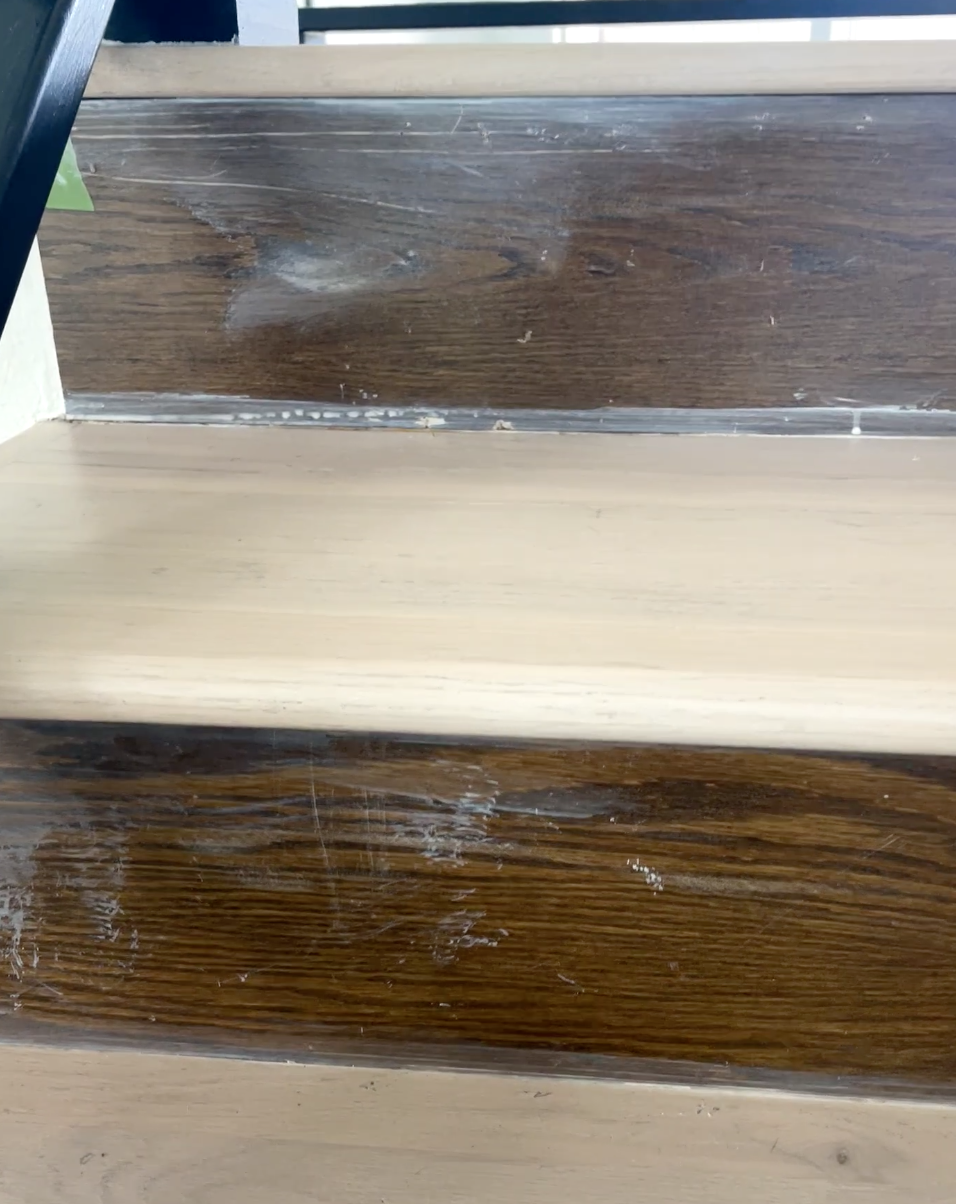
And here we are 10 months later. This is the white oak which is our upstairs hallway outside our bedrooms. It was newer (6-7 years old) and in really good shape. They put some sort of filler in between the boards which had some natural gapping which is now loosening and chipping away. It’s also sharp and we’ve all scraped our feet walking across it so it isn’t just an eye sore.
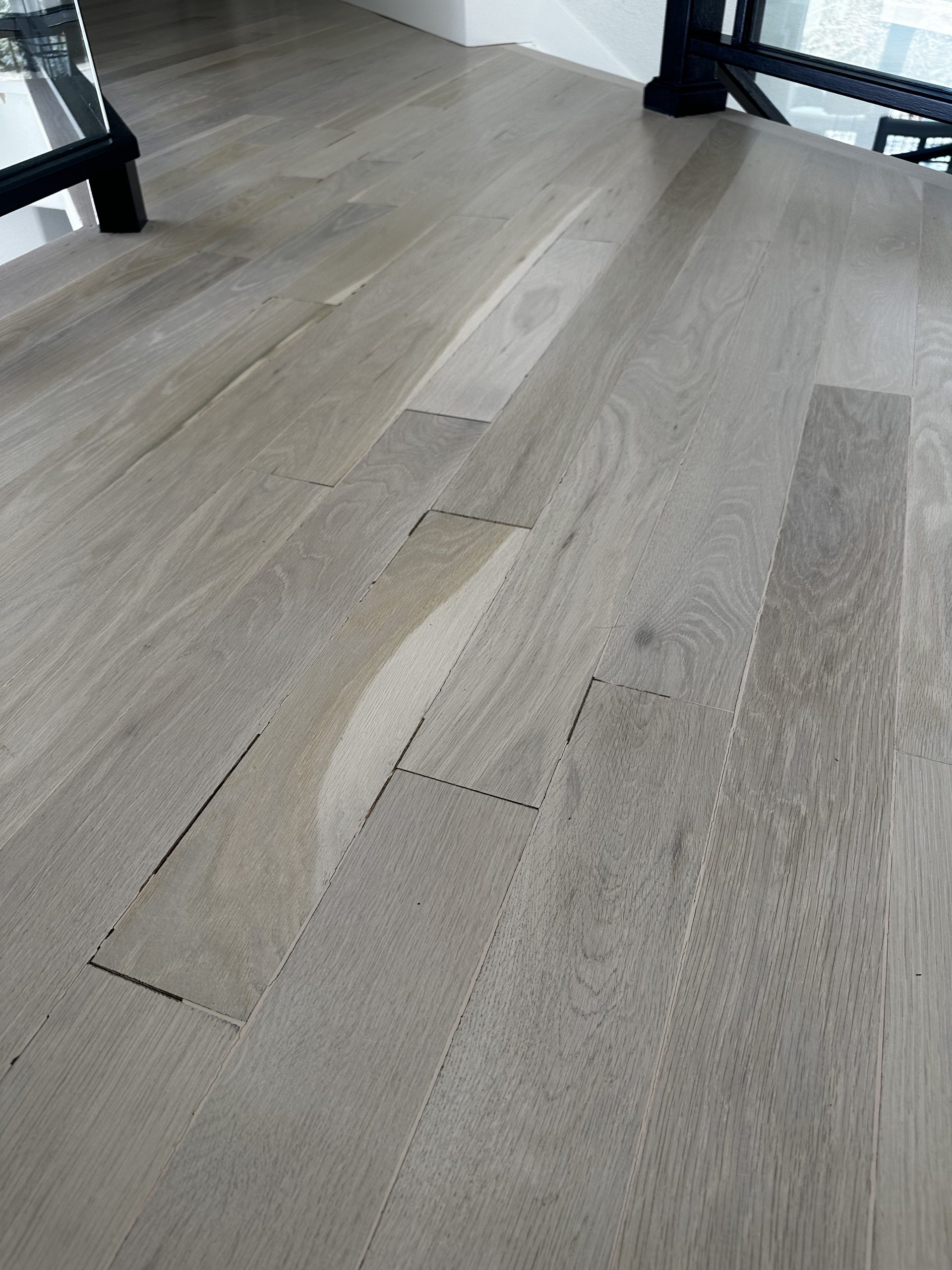
You can see where it is all coming out from the cracks and is exposed.
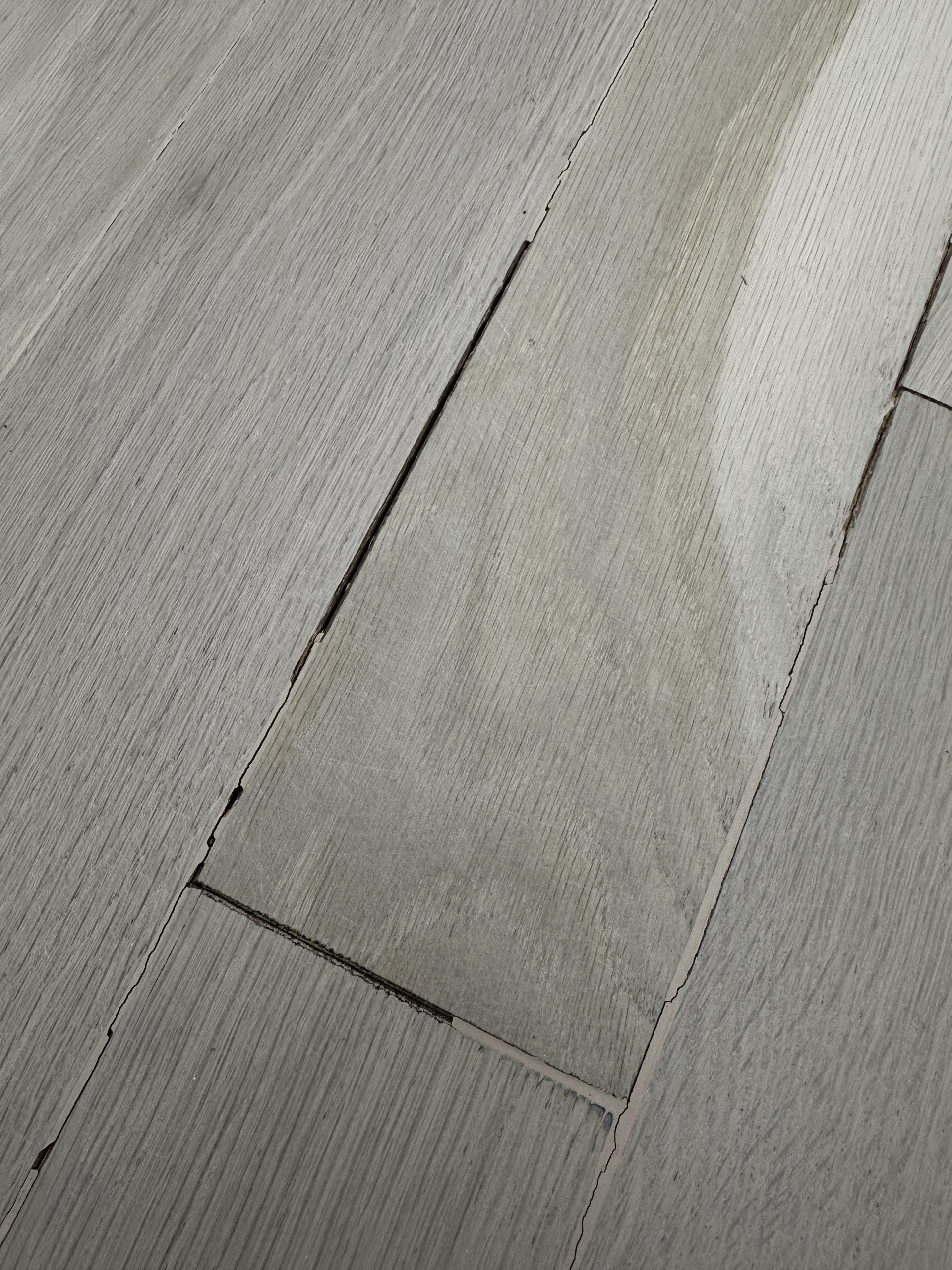
Here is a closer look at what the boards look like on our main level. Again, the filler that they used to address gapping in between the boards is coming out. It’s not everywhere like upstairs, but I feel like it’s all eventually going to wear away and it is noticeable in the places where it’s missing.
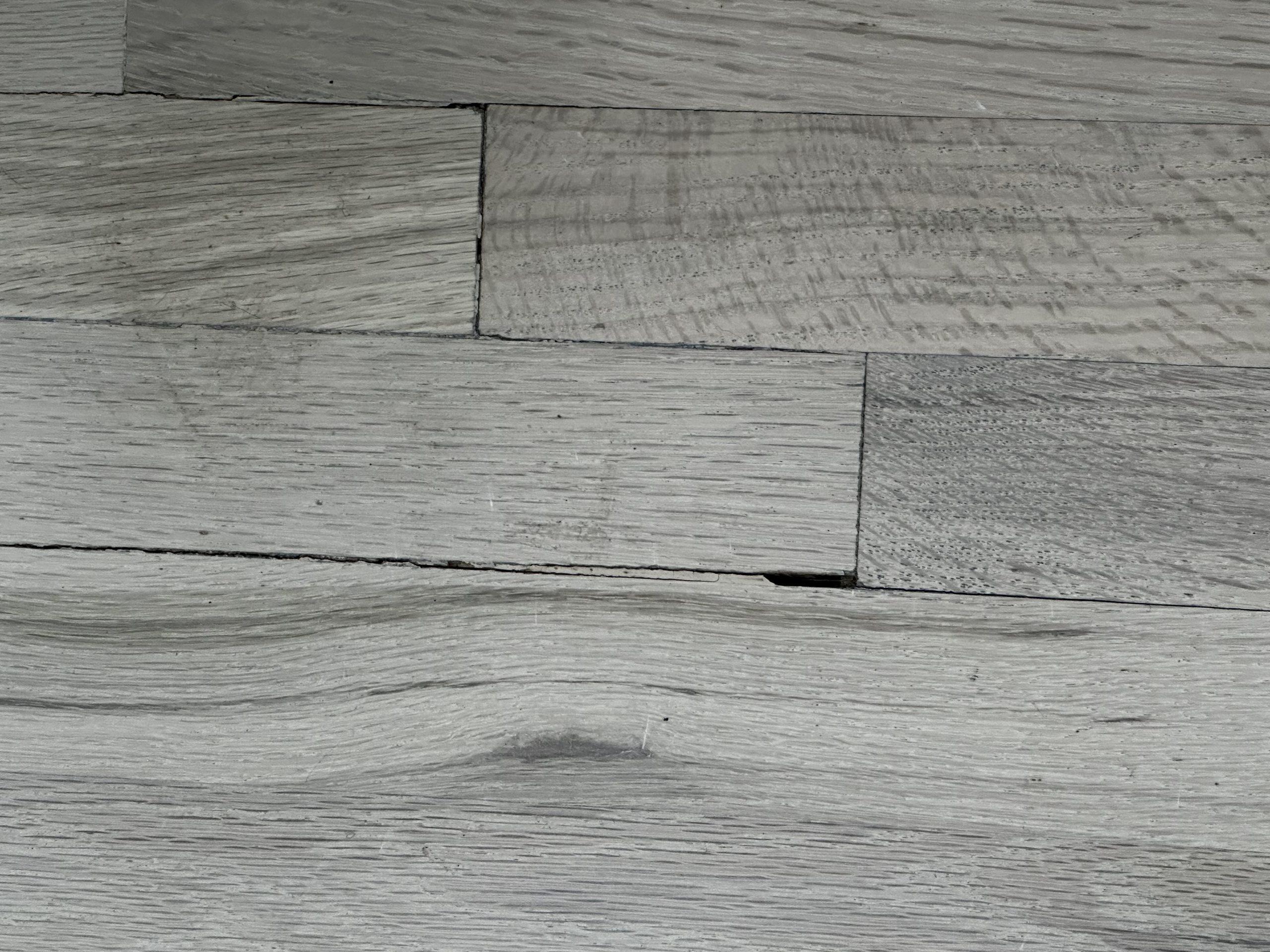
More of the main level. Where it’s bonded together, it looks really nice. This is still happening and is our biggest frustration.
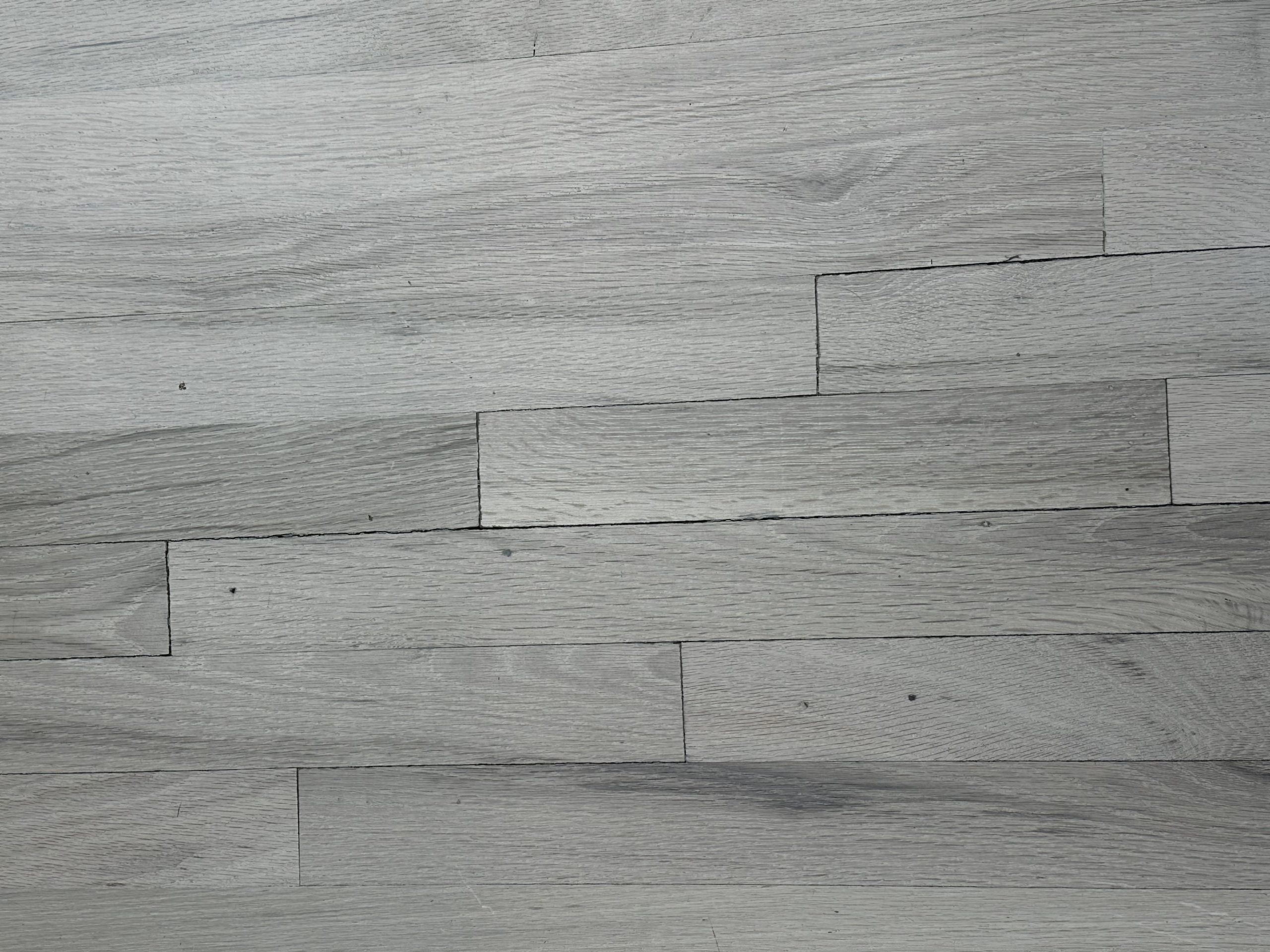
We also have some problems with chipping. It was so easy to chip the floors easily early on. I feel like this doesn’t happen anymore, but I really think that not giving the floors the drying time they needed contributed to this.
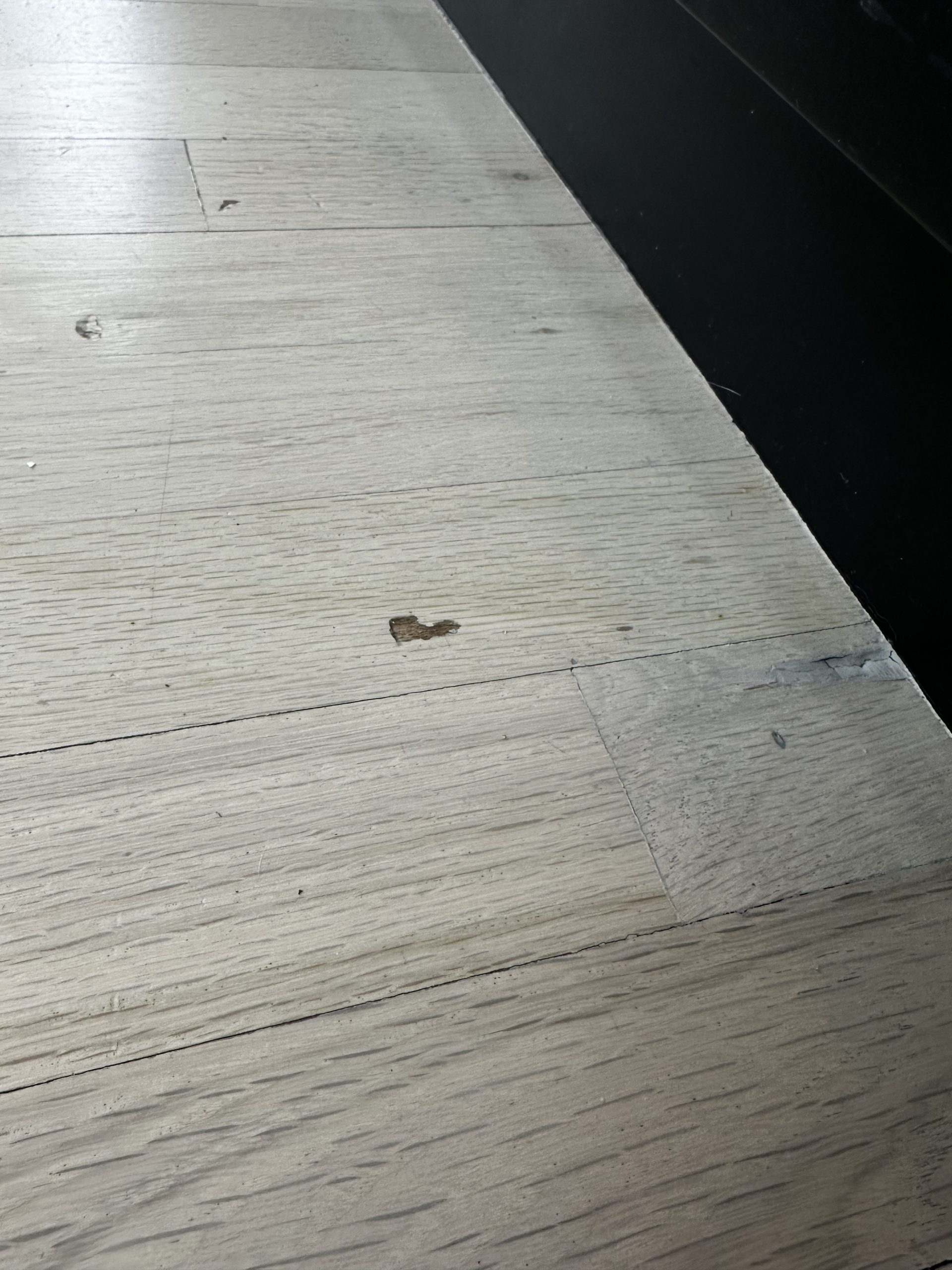
Here is what the floors look like today. Overall, I really like the look. I just wish the filler they used to bond the boards together and for the cracks wasn’t coming out.
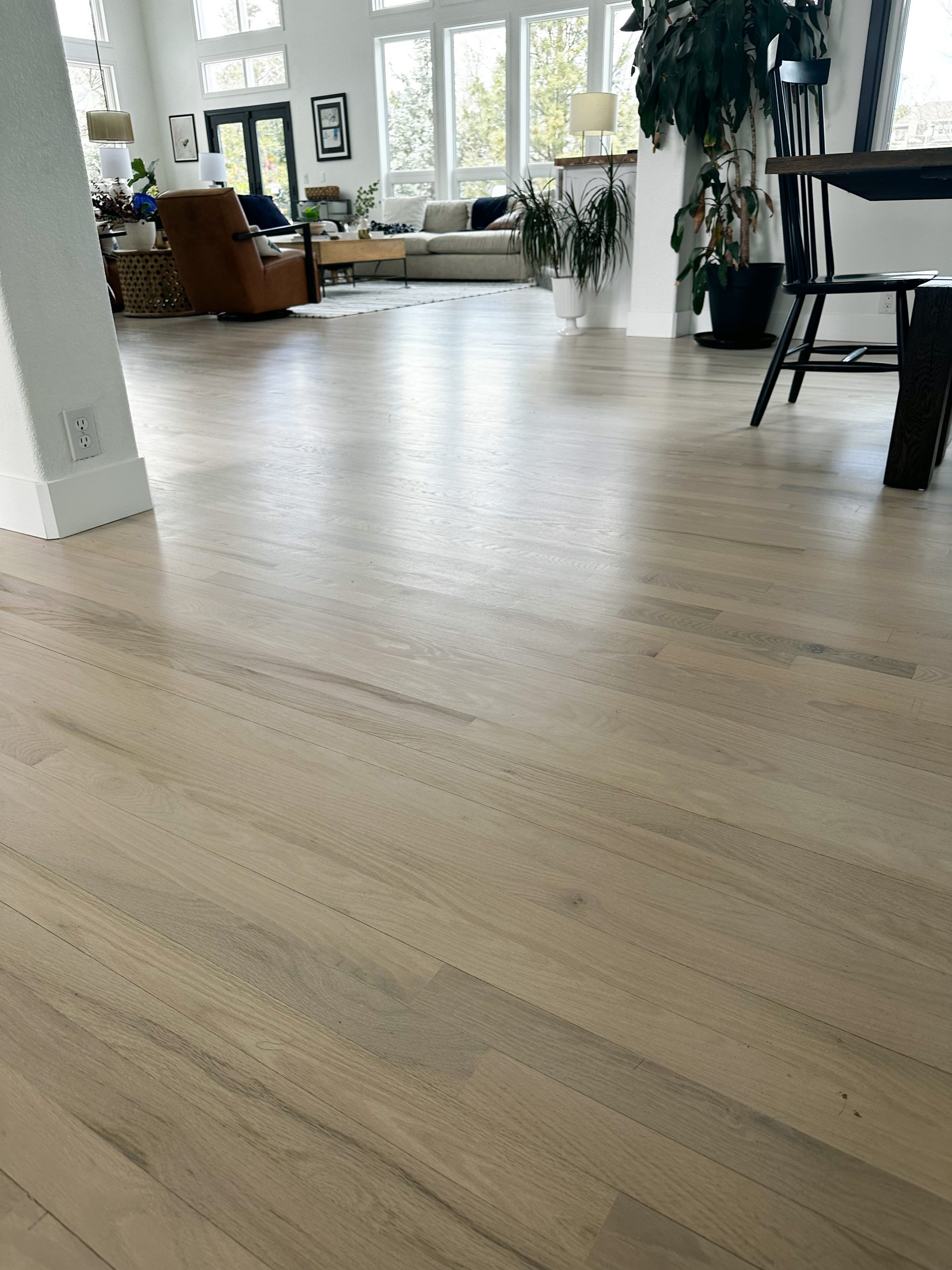
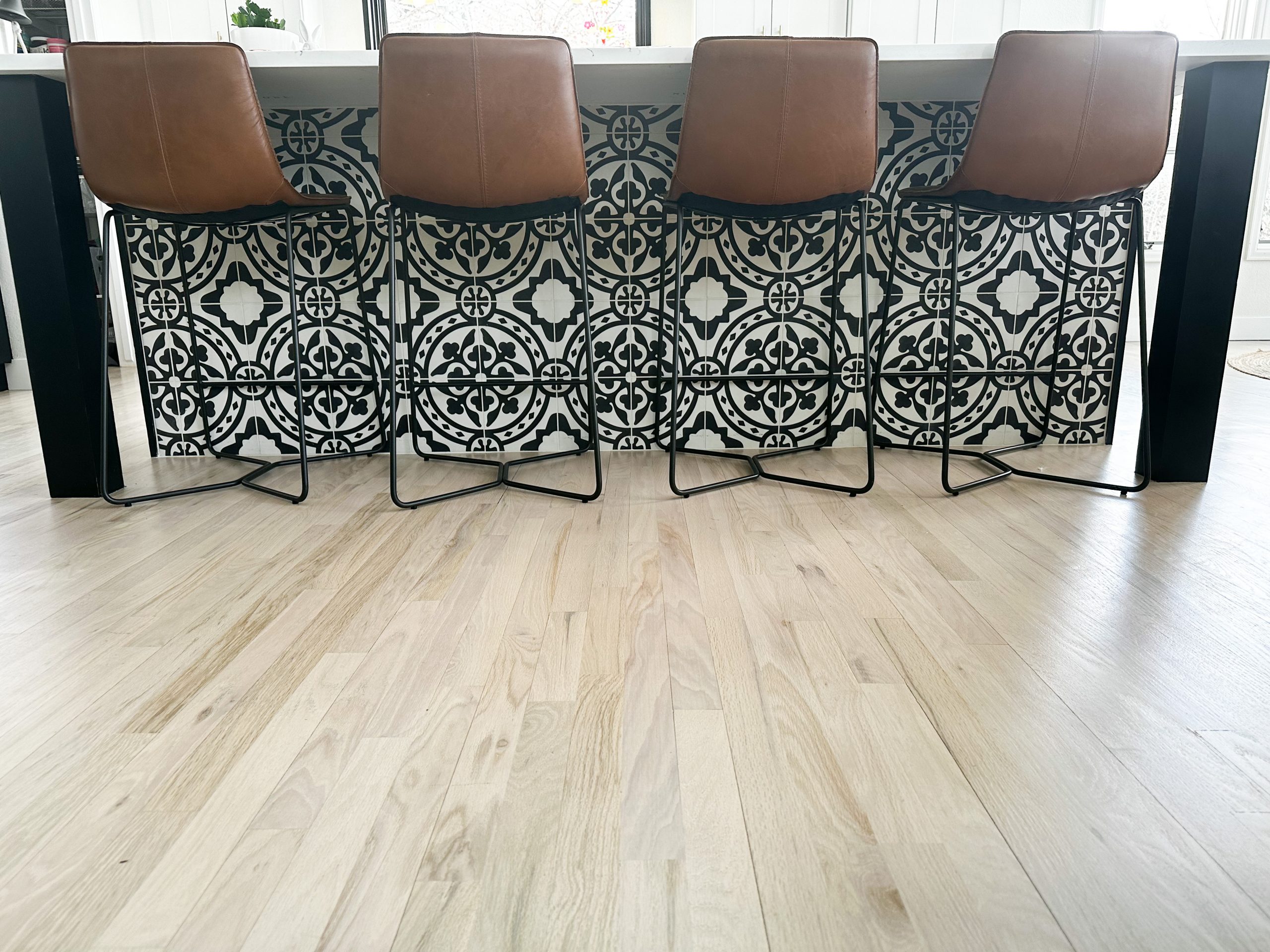
We do need to get the current problems repaired, but overall the experience was positive and we get a lot of compliments on how the house looks which wouldn’t be the same without the light flooring.
I hope this helps you with your journey to replace or refinish your flooring. It’s such an expense and a HUGE inconvenience to move everything out that you want to make sure you’re only doing it one time.

I’m going to upload a lot of videos on Instagram as well so you can click HERE for my page and look for FLOORS in highlights for all of the info as well as videos. You can also DM me there if you have any questions.
